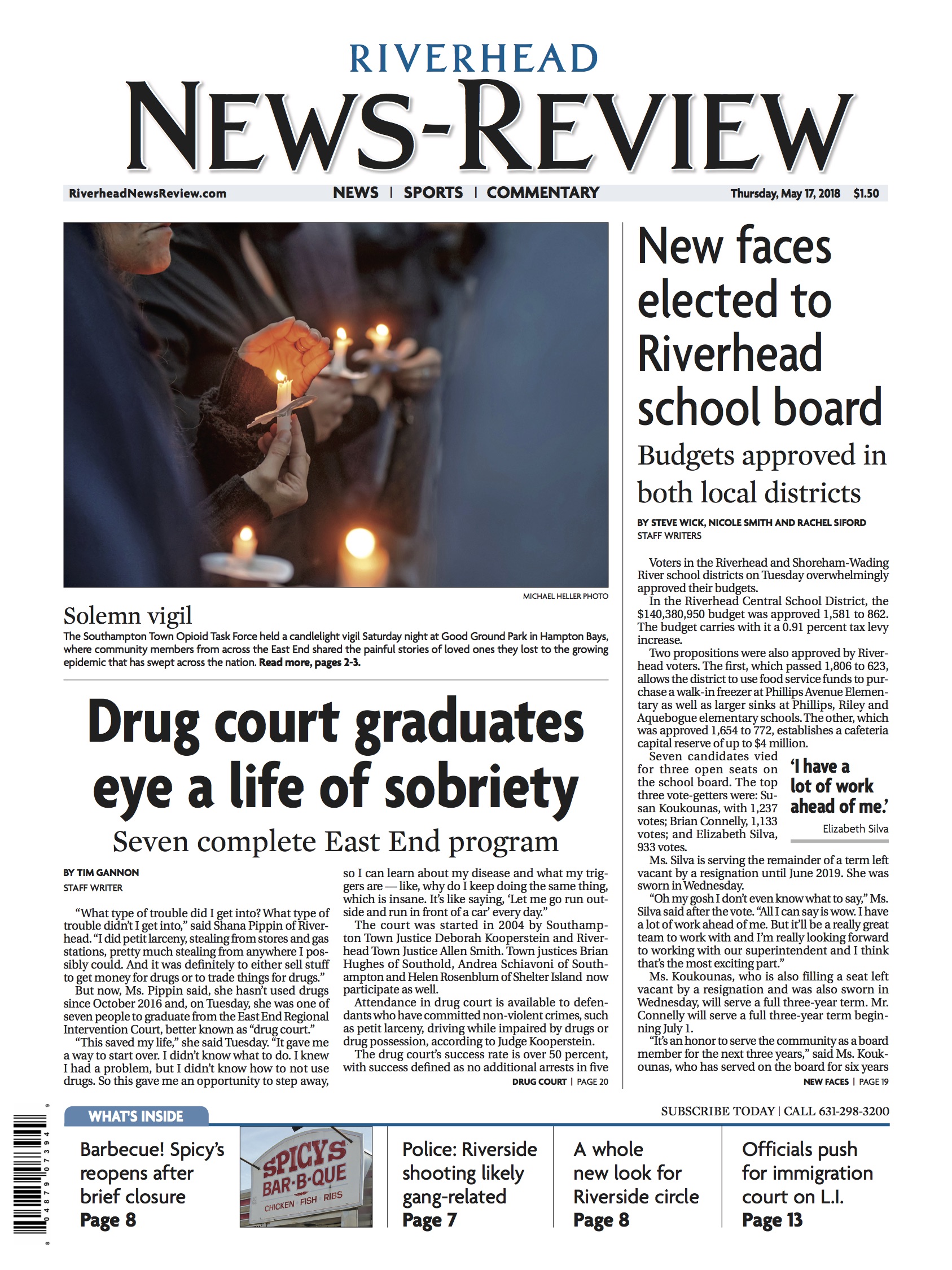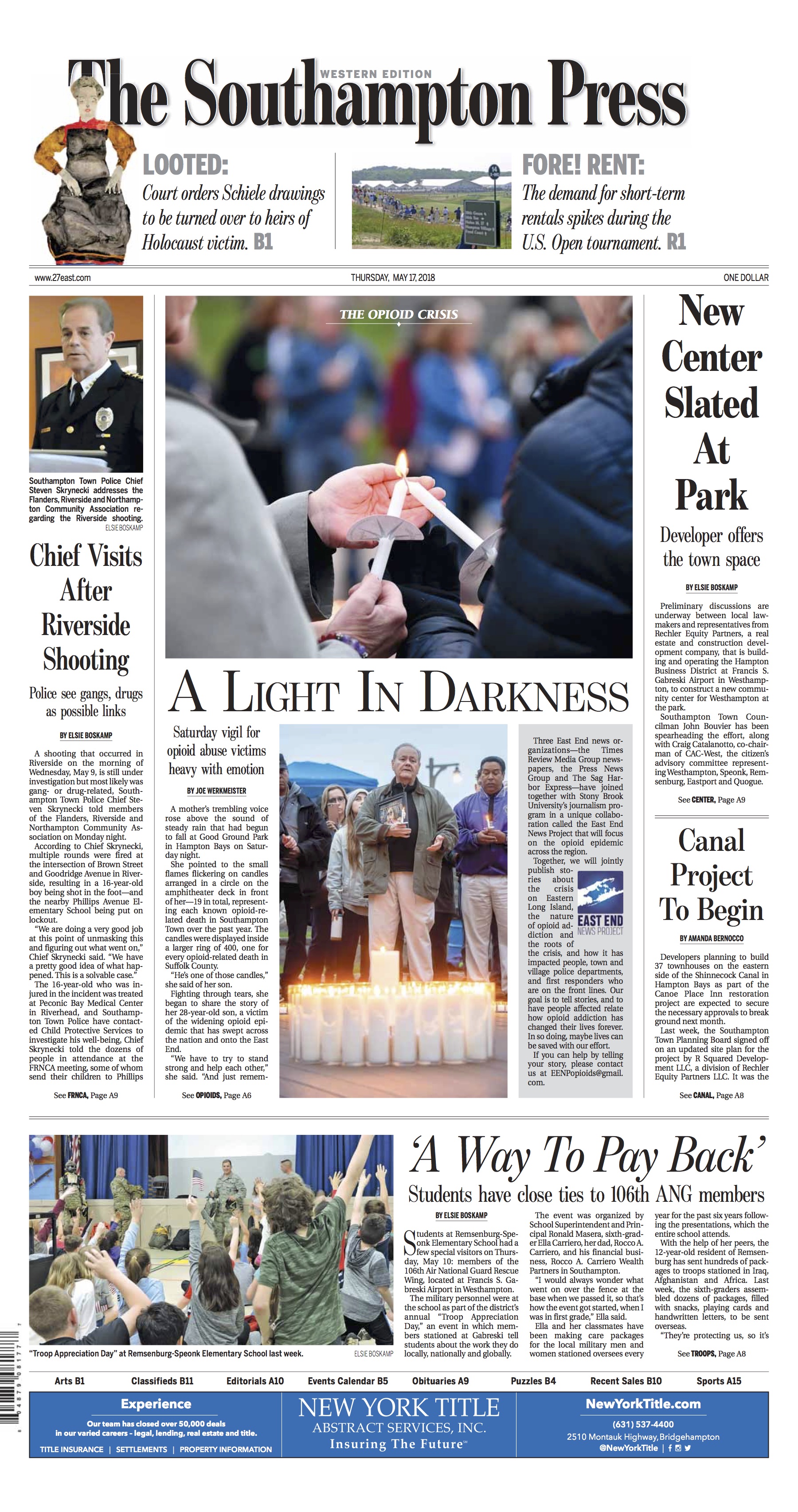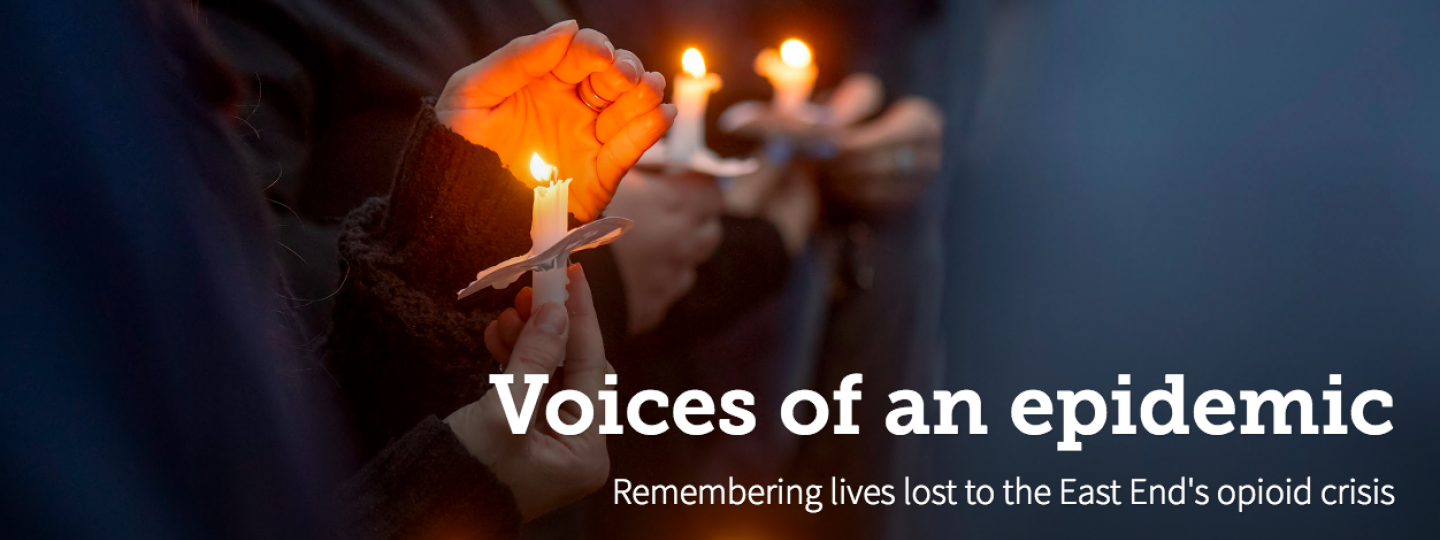Six news organizations showed up to cover a candlelight vigil in Hampton Bays, New York, earlier this month. They came from three different media companies and included newspapers and weeklies. And, for the first time, they were there to work together.
Last week, their coverage of that vigil and how the opioid epidemic has hit eastern Long Island launched the East End News Project.
It includes the Times Review Media Groups’ weekly Suffolk Times and Riverhead News-Review and the Shelter Island Reporter; the Press News Group’s weeklies, The East Hampton Press and the eastern and western editions of The Southampton Press; the weekly The Sag Harbor Express and journalism students at Stony Brook University.
The night of the vigil, about a dozen journalists spread out and captured individual stories of the people lost and the people left behind from opioid crisis.
On their own, these publications couldn’t cover the whole story, said Times Review Executive Editor Steve Wick. (The Express has a newsroom of three. The South and East Hampton weeklies have about 16 journalists, with eight reporters, and the Times Review publications have 15 in editorial, about six are reporters.)
“So we decided for the first time to pool together,” Wick said.
Friendly competition
“This is a very unusual place,” said Joseph Shaw, executive editor of the Press News Group. “We have a collection of some of the best community journalism in the country all on the east end.”
He and Kathryn Menu, editor and co-publisher of the Sag Harbor Express, have been talking for awhile now about how they could work together.
Wick, previously at Newsday, reached out to Shaw and brought along another former colleague, Howard Schneider, the founding dean of Stony Brook’s J-school.
They all wanted to overcome the gap between what they’re able to do with limited time and resources and what they’d like to do.
With the East End News Project, the goal is not just to tell bigger and more personal stories, but to confront the opioid epidemic as a community, Menu said.
They want to offer resources, help humanize and destigmatize people dealing with addiction and examine the medical industry’s role and response to the crisis.
“We really want this to be about people,” she said.
And a three-year, $150,000 grant to Stony Brook offers the chance for students to work alongside pros, Schneider said, but it also offers the pros something, too.
“More boots on the ground,” he said. “But I think the students will add an influx of talent, enthusiasm and ambition and also multimedia capabilities that some of our other partners might not have.”
Not just opioids
Collaboration might feel counterintuitive, Schneider said, for an industry that rewards competition.
“I think we’re in an environment, though, where there’s a recognition that to do journalism that’s ambitious and special, we may have to be more collaborative and work together with our competitors.”
He’s eager to see if the results will be worth the work, not just for the newsrooms involved, but for the communities they’re covering. Is the sum bigger, and more valuable, than the parts?
Newsrooms around the country are already working together to tackle big projects, both local-to-national and regionally. But is there a model, Schneider wondered, for including more journalism schools?
The East End News Project plans to continue for the rest of the year with a focus on opioids. But it’s just the beginning of the partnership, Menu said.
Their newsrooms haven’t been hit by the same cuts that have shrunk so many other staffs. But working together is a model that could work for other places in a way that benefits the journalism and the business by offering a better product.
Each newsroom plans to cover what the crisis looks like in their communities, and they’ll work together and share each other’s work for the rest of the year.
“We are competitors, but we’re all in this together," Shaw said. "The future for us as an industry is about doing good work, and if we can pull together to do better work together than we do individually, I think that’s crucial.”



Correction: An earlier version of this story said the Sag Harbor Express and The Suffolk Times are dailies. That's incorrect. They are weeklies. We apologize for the error.









